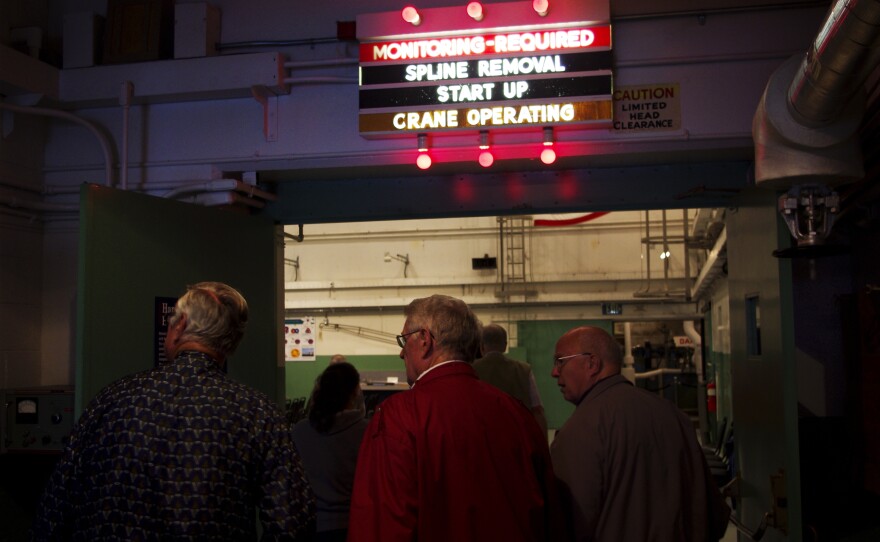
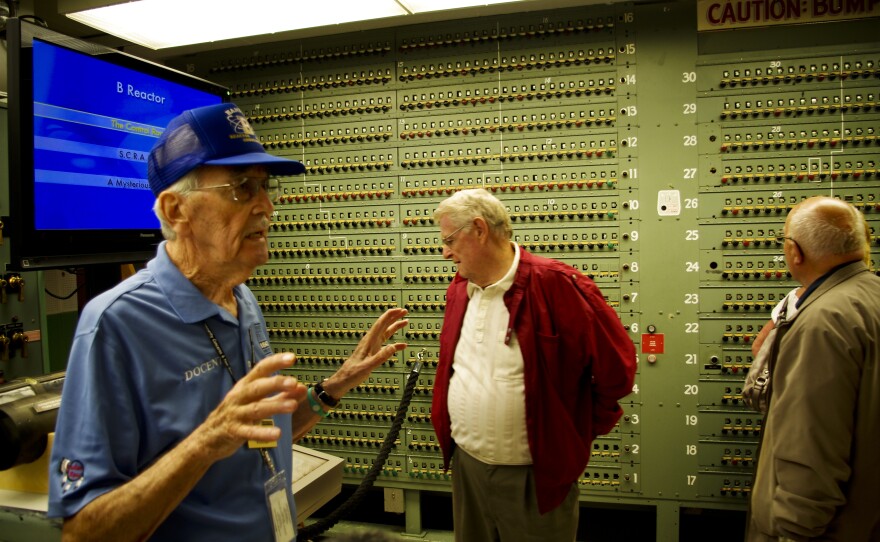
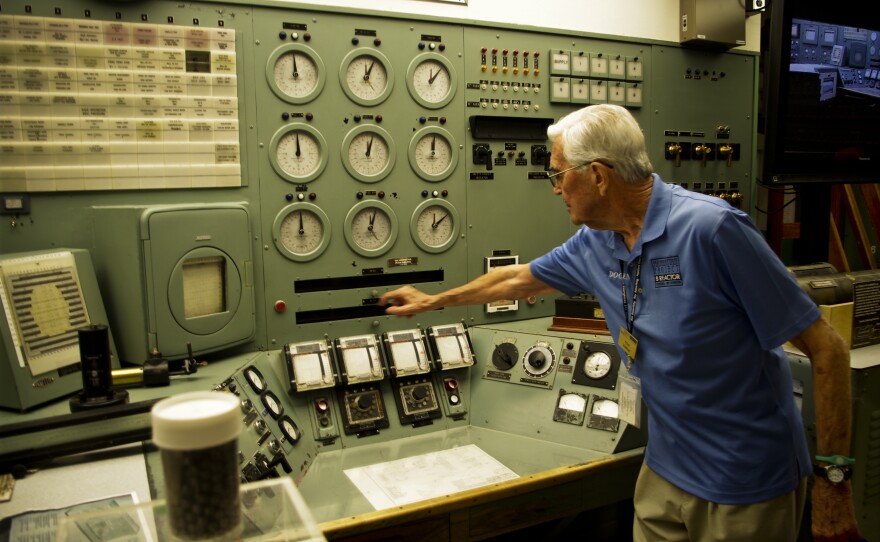
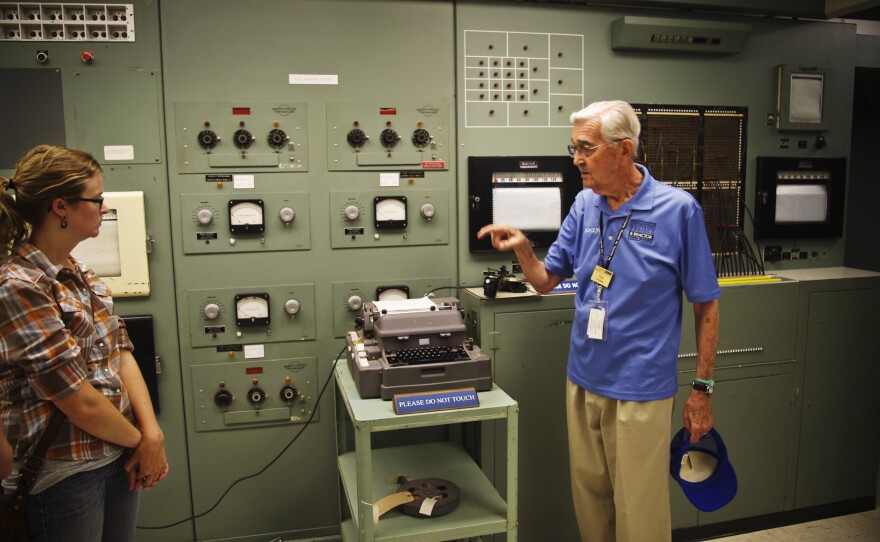
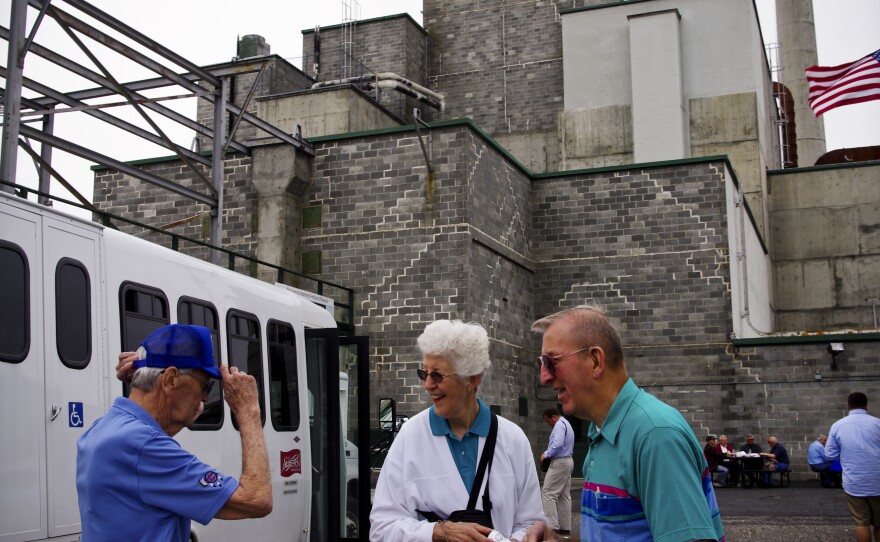
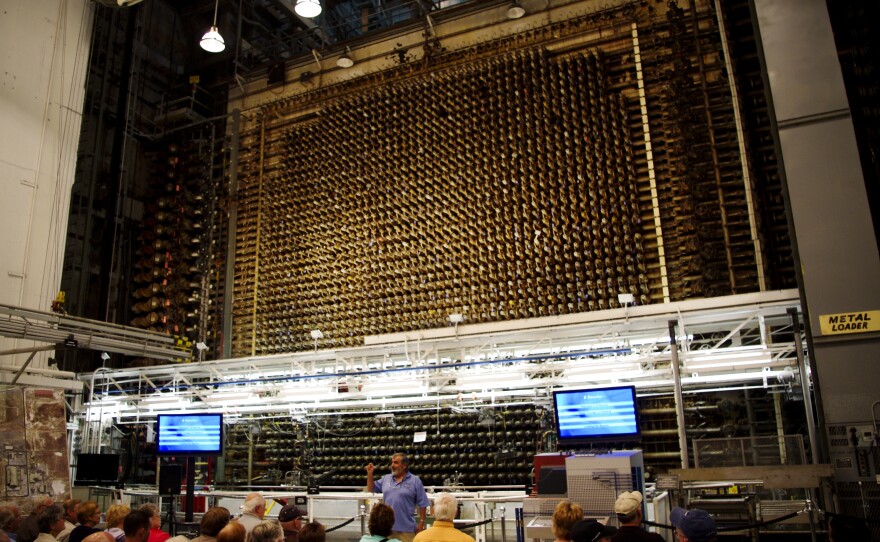
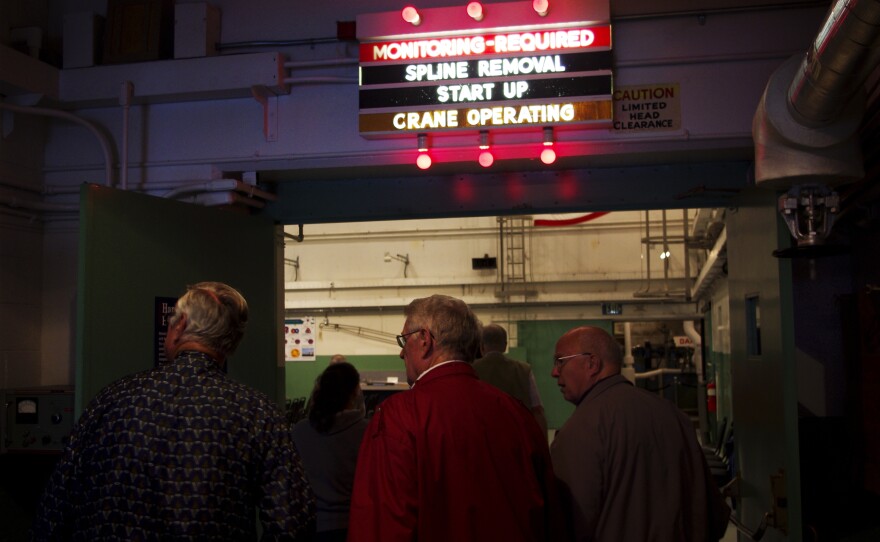
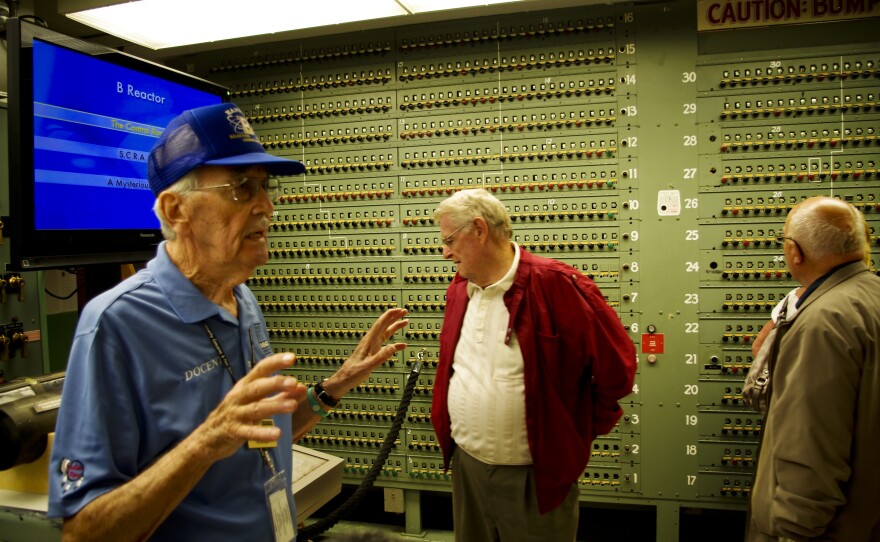
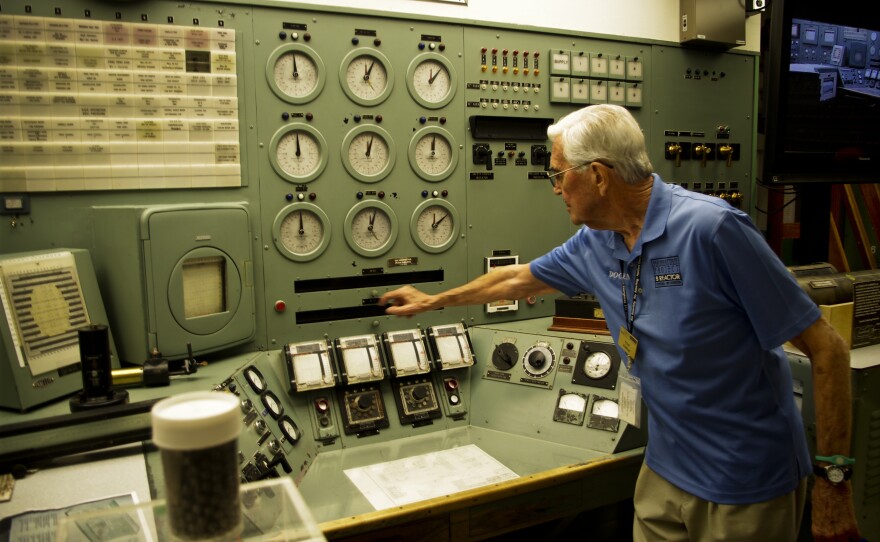
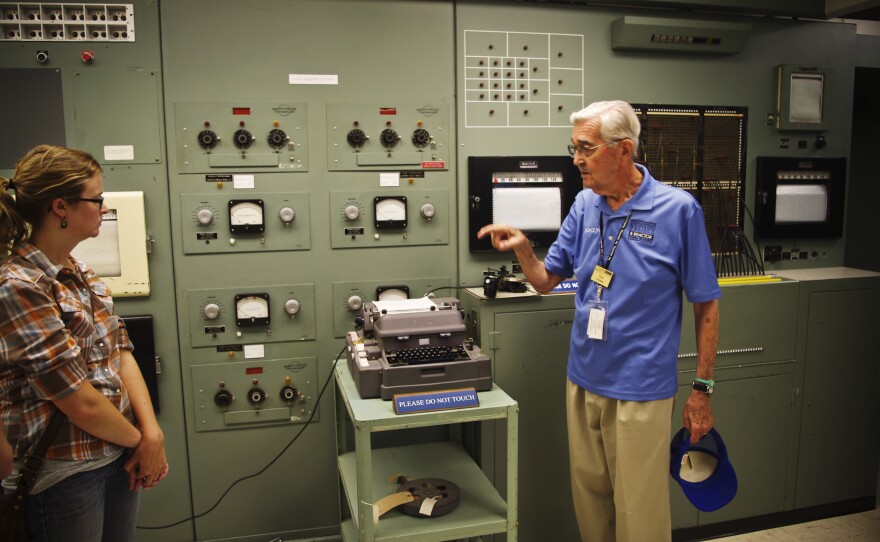
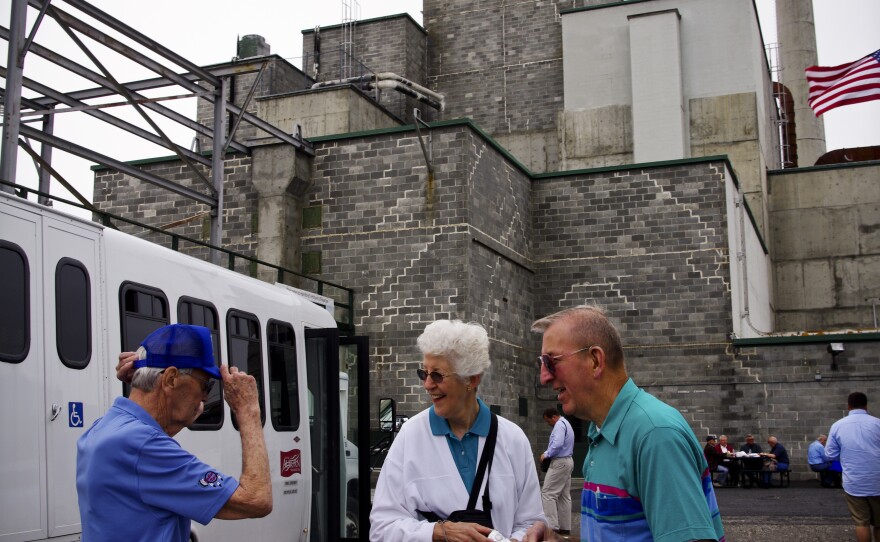
People tend to remember that the atomic bomb was developed at Los Alamos, N.M., and Oak Ridge, Tenn., but they often forget about a third nuclear production complex -- the Hanford Site in Richland, Wash. It's where they built the world's first full-scale nuclear reactor.
The "B Reactor" is a windowless, cinder block hulk out in the middle of nowhere. You might mistake it for an abandoned cement plant. But inside, it's a lovingly preserved time capsule of the Atomic Age. If you're lucky, your guide will be one of the people who worked here when the place was still new.
Paul Vinther signed on at the plant in June 1950. He's a physicist, and his first job was helping to fine-tune the nuclear reaction that turned uranium into the highly radioactive plutonium that went into bombs, such as the one that fell on Nagasaki. He got here during Cold War, when B Reactor was churning out the raw material for America's growing nuclear arsenal.
Vinther leads a tour group into the control room.
The control room is very midcentury. It's government-issue green, with hundreds of analog gauges wired to the reactor core. No computers screens here. A vintage, hand-lettered sign warns against bumping into things.
"Well, the idea is that if you bump it, you might cause the electrical connection of this thing to vibrate. It might activate. You don't want to shut the reaction down because you bumped it!" Vinther says.
Did that ever happen? "It must have at one time because they wouldn't have said that," he says. "But people were very careful."
Vinther seems torn: He knows tourists want tales of hair-raising near-misses. But he insists his co-workers did their jobs safely. Still, there's no getting around the fact that the potential danger is what makes this place interesting. It's a point made by the hacksaw hanging on the wall in front of the reactor itself. The hacksaw has a very long handle.
"That shows when [people were] working on something hot that had to be cut, they could stand quite a distance away and still do the job," he says.
"Hot" -- as in radioactive.
Sometimes tourists ask Vinther why he participated in the production of such frightening weapons. For him, it's simple: He says the A-bomb saved American lives. But when asked about all the radioactive waste produced here, he sighs. He calls it "a sad situation."
"Here we were, worried about Germany and Japan, and then we worried about the Cold War situation with Russia," Vinther says. "The idea was, 'Well, we'll just put the waste into tanks, and we'll handle it later, when we have time.' "
Later is now. Hanford no longer makes plutonium. The reactors that followed B have been shuttered and sealed up, and now the sprawling, 586-square-mile Hanford site has become synonymous with a giant remediation effort. Government contractors are billions of dollars into the process, with no end in sight. In fact, when it comes to cost and sheer technical complexity, the reactor is actually less impressive than the modern-day cleanup -- and they offer tours of that, too.
Copyright 2013 NPR. To see more, visit www.npr.org.






